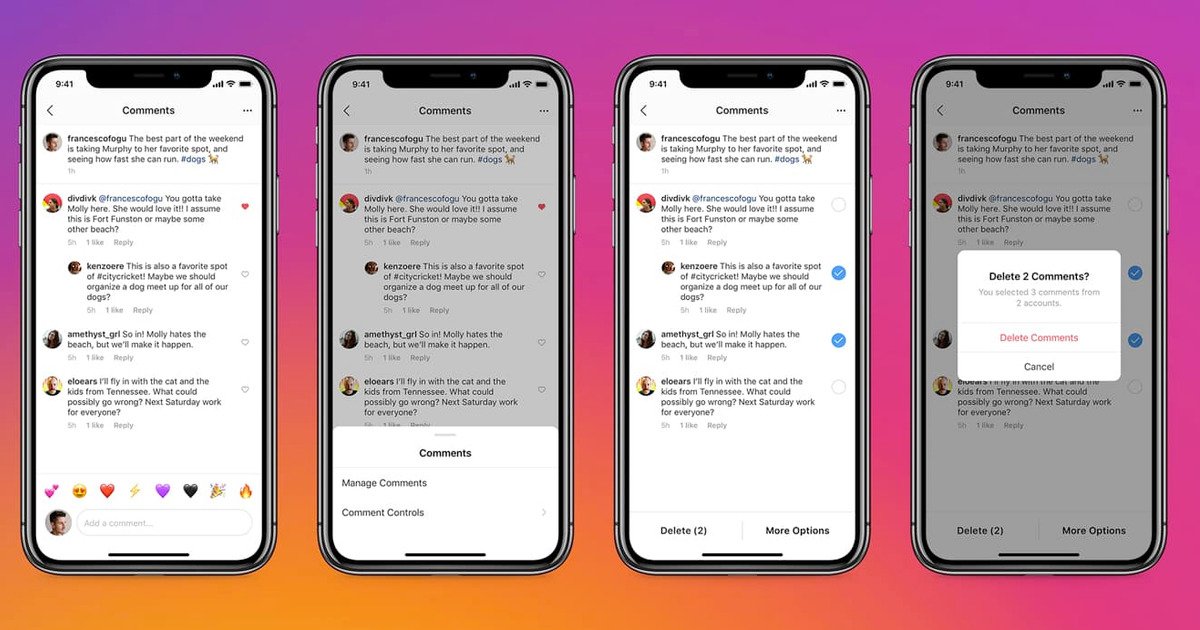
The Visuals of Marketing
By Nicholas Bussiere
There's a particular art to marketing.
Knowing who your audience is, what kind of messaging works for them, and creating a piece of media powerful enough to drive those people to action takes years of learning.
When everything finally comes together, it's like putting the finishing touches on your masterpiece, months upon months of work leading to the moment it is finally released.
One of the key ways to ensure you're crafting an effective marketing campaign is by utilizing visual storytelling, the art of using graphics, images, videos, and more "to engage with viewers in an effort to drive emotions [...] and motivate an audience to action" (Shiao, 2020).
But, using visual storytelling in marketing takes more than just an idea. I'll walk through what it takes to create an effective campaign and some ways other companies have successfully crafted their own narratives.
Broadening Our Knowledge
Visual storytelling has become a fundamental way for people to better connect with their audience, whether through a photo story, infographic, or video; there are a multitude of ways to make visual storytelling work harder for you. And when combined with marketing, it makes it an absolute dream team.
First off, visual storytelling isn't anything new.
We consider cave paintings some of the earliest pieces of visual storytelling, dating back to 30,000 years ago.
And as history progressed, visuals remained a core way to document what was happening throughout that time. It's one of the main pieces that have led historians to understand more about human history and what early people were like.








Even as we flash forward thousands of years into the future, visual narratives are one of the main ways people connect with current events and the problems we face in society.
From news stories to blockbuster hits in theatres, visuals transcend topics and mediums.
So, how does marketing come into play?
Well, one of the most crucial aspects of marketing is connecting with your audience. For an emerging company or market, if no one buys into it, then it's dead in the water.
It takes some storytelling to sell it. So, how do we do that?
It first starts with an idea. What are we focusing on? Understanding your product (whether that is an actual product, a service, or maybe yourself) and its function is essential, as we need something to sell.
It doesn't necessarily need to be a feature of the product, but the way the product makes you feel or how it contributes to your life. How abstract this idea can be is great (and flawed) in many ways.
Then comes the production, what we are making, and how we are making it. Depending on what your necessities are, this can vary immensely. It all depends on your story's needs and how you intend to tell it.
Then, it's time for implementation across all platforms and maintenance of your original vision.
With these steps, you can go through the entire marketing campaign process and see all the intricacies that come along with it.
Finding the Right Idea
Ok! With the basics down, we can start exploring our idea. It needs to be effective, as this is the spark that will direct the entire campaign, so building off of a good foundation is essential to having something that works across mediums (Brown, 2008).
For some companies, a campaign about the story of the company can often be highly successful, as not only does it give customers more background about why the company started and why it does what it does, but it also allows customers to make a connection that is deeper than the superficial pieces of media they usually see.
It helps to go beyond and establish your mission, core goal, and how your product stands out from its competitors.
One exceptional demonstration of this is through Lego's Origins story, a 17-minute walkthrough of how Lego came to be, starting from a simple idea and growing into the massive company it is today.
This ad is exceptional, garnering 36 million views on YouTube alone and helping build that connection to customers of what makes Lego so special: it isn't any toy brand; it's Lego.
The same goes with companies like Burt's Bees.
Their website created a fantastic journey showing customers exactly how they started and how their product turned from some spare wax from Burt's Bee Hives to a massive brand and product in stores worldwide.
But it doesn't have to be about your upbringing; it can just showcase the product and its features.
One company that does this exceptionally is Apple.
Their ads consistently encapsulate what it is like using their product, using visuals as effectively as possible to show the audience exactly how Apple products make you feel.
One of my favorite ads recently has been about their new 2nd Gen Apple Airpods Pro. In this ad, they capture the feeling of using noise cancellation in their new Airpods by showing the entire world floating high above the user; the world is a distant noise with the music in complete focus.
Apple's implementation here is a great way to market an experience entirely dependent on using the product.
You don't know precisely how the headphones sound or how well the noise cancellation works, but Apple can show you what wearing them feels like. You are not buying a product; you are buying an experience.
An experience is an excellent way to show people what they are buying, and it can be enhanced further when it comes from customers themselves.
One marketing campaign from Oru Kayaks showcased the experiences of their customers who took their kayaks on, where they went, what they did, and how their experience was using a kayak that was so portable.





People inherently want to believe other people; that's why we read reviews when buying something off Amazon or look up a YouTube video of someone who already bought it; these recommendations help us believe that this is the right purchase and that this product is better than others.
Showcasing this information first, including pictures of real customers using it, and recommending it helps ensure that a potential user might also like it.
These are excellent ways to target a desired audience better; it just takes a good idea. I wrote another article all about ideation and how you can create something that works for you and your company, which you can check out here.
But, what helps is surrounding yourself with creative people and allowing yourself to throw out any idea without criticism, as even the wildest thoughts can lead to something that will work perfectly for what you need.
Creating the Product
With the ideation phase completed, it's time to start bringing the concept to life.
Depending on your needs and the size and budget of the company, this might be expansive and encapsulate different ideas, various audiences, and multiple products. For smaller companies, this might be a single idea for a single product.
First, you need to choose what will work best for your campaign.
It can be a video like the Lego and Apple ads showcased earlier in this article, or it can be a website, billboard, print ad, or anything else that would work for your business.
For smaller businesses or personal projects, choosing one piece of media that can stretch across multiple mediums is a great way to save money while reaching as many people as possible.
Videos are a great way to do this as a high-quality video can be taken and condensed to a quick 15-30 second ad, have frames taken out to use as a hero image on a website or online ad, or used as a gif for social media.
Sonos does this kind of work all the time, with videos being used to fit with other marketing material or cut to be used as a gif or image.
After choosing the type of media to produce, it's time to flesh out the original idea into a complete story.
While for most marketing professionals, this is done by outside organizations, it can help to create storyboards of what you want to happen, so when it gets passed off, it can maintain the same vision you had during initial conception.
I love storyboards as they help visualize an idea to see if it's feasible and makes sense when put onto paper.
Storyboards can be used to effectively communicate with other teams or used to keep the original idea intact if you create the project yourself.
Creating marketing material is an article within itself. Still, the core part of it is similar to that of the design thinking process (a blog post you can read here), starting with an idea, getting research and feedback, creating an initial storyboard or prototype, and then fully producing it.
Most of this depends on the team working on it and the best practices for them, but in the end, you should have some fully produced material ready to be sent out for the world to see.
Publishing your Work
With your media finished, it's time to send it out there, but where exactly?
As discussed earlier in the previous section, it's good to go into the production process with an idea of where you want your media to end up.
For some, you may need to cut down the original piece to fit into the format required for Instagram or Facebook, or you could create a complete piece to go out on late-night TV and YouTube.
Whatever it is, ensure it is optimized for the audience on that platform. Don't post 2-minute-long videos on TikTok when audience retention barely reaches 10 seconds.
Ensure it grabs and coerces the audience to watch more than just a few seconds or is enticing enough to have them click to learn more.
Feel free to edit your media as well, as not often are you getting back something that fits exactly what you imagined, so do tweaks, cutting, and photoshopping to put your idea in complete focus.
Even if you aren't using social media as a platform to market on, you can often use these to gain more knowledge about what your audience likes, what they do, and the kind of people they are.
But, once you are happy with the product, it can be sent out to every platform your audience is on. Now comes one of the most complex parts of the process: maintaining that original vision over time.
Maintaining the Vision
Maintaining your vision is one of the absolutely hardest (and most overlooked) parts of the process.
We often want to assume that once it is out to the public, it is out of our hands. But one of the most complex parts is keeping up with what is going on with your media.
Ensuring that your website is displaying images correctly, ads are placed in places that you want and not alongside something that doesn't fit your brand, and that customers are responding well to the ad is crucial so that the business can continue to grow.
In most cases, this is a job within itself, as companies will spend millions to display their product in the best light possible, whether that means combing the internet for negative publicity or adding new placements to ensure the product remains top of mind.
Top of mind is the key here, as brands like Apple, Dyson, and Kleenex have all remained the top players in their spaces by constantly promoting and gaining market share wherever possible while knocking down any other players that seem to encroach on their space.
Much of this comes to maintaining relevance; the moment you begin to lose relevance, you further distance yourself from your desired audience.
It's also essential to gain as much data as possible. Data is the backbone of marketing, as anyone can have a good idea, but does data support your conclusions and expectations?
After sending out the campaign, see if audiences are responding well, what is the click-through rate (percentage of people who interact with the ad), what platforms are performing the best, if using multiple versions of ads (like in an A/B test), which are performing better?
What is excellent is that many platforms that support advertising now give highly detailed information about what is effective and what needs improvement.
From this information, you are able to dynamically update your campaign and ensure you are targeting as many people as possible. It also reveals if aspects need to be changed if your audience isn't responding well, and see how it can be shifted to better work with your prospects.
And, if this campaign does not work out, you can take this data forward and apply it to your next one to continue to grow and learn from your previous successes and failures.
But that is a marketing campaign in a nutshell! It is crucial to constantly learn and understand what can be improved and what is adequate for your audience. From there, you can decide what to follow up with and, hopefully, create consistent campaigns that garner consistent results.
Conclusion
Marketing is more complex than most people make it out to be. It takes teams of creative people, business heads, and hundreds of thousands to millions of dollars to create a piece of media that brings your idea to the next level.
There's a reason so many companies rely on their marketing teams to keep them ahead: you need them to avoid falling behind and losing relevance in the overall discussion.
It's why some companies like Tesla have exploded in popularity early, then slowly dwindled in the following years after laying off their entire marketing department.
The need for constant positive discussion helps bring new potential customers to the forefront. Marketers can look into customer problems, understand what they care about, and try to cater to an experience around it.
Nowadays, almost anyone can learn how to market themselves, especially using social media platforms like TikTok and Instagram. Small brands that wouldn't have gotten any attention are now some of the most popular in the world, with millions of customers lining up for the privilege of buying their goods.
A good marketing team can be the change that makes the absolute difference, and it all starts with that one thing that makes you stand out.
Agrawal, A. (2017, January 20). How visual advertising will change marketing in 2017. Forbes. https://www.forbes.com/sites/ajagrawal/2017/01/19/how-visual-advertising-will-change-marketing-in-2017/?sh=6fdc550e3408
Apple. (2023a, March 15). The new airpods pro | quiet the noise | apple. YouTube. https://www.youtube.com/watch?v=fVW8-px4Ufw
Apple. (2023b, October 31). Behind the scenes: An Apple event shot on iPhone. YouTube. https://www.youtube.com/watch?v=V3dbG9pAi8I
AYITER, E. (n.d.). History of visual communication. viscomhistory. https://www.historyofvisualcommunication.com/
Brown, T. (2008). Design thinking. Harvard Business Review, 86(6), 84.
Busche, L. (n.d.). 50 brilliant billboard ads that will stop you in your tracks (and what you can learn from them). Canva. https://www.canva.com/learn/billboard-advertising/
Duluth Trading Co. (n.d.). OUR STORY. Duluth Trading Co. https://www.duluthtrading.com/our-story/?feature=ftos
Eisner, W. (2008). Graphic storytelling and visual narrative. W.W. Norton.
Henry, C. (2020, May 12). Instagram iPhone app gets update to help keep bullies away. The Mac Observer. https://www.macobserver.com/news/instagram-iphone-app-gets-update-to-help-keep-bullies-away/
A history of storytelling through pictures. The British Museum. (2019, July 24). https://www.britishmuseum.org/blog/history-storytelling-through-pictures
Kristensen, E. (2023, October 19). How to use visual storytelling in marketing (with examples). Customer-Centric Marketing Automation Platform. https://www.drip.com/blog/visual-storytelling
LegoClubTV. (2012, August 10). The LEGO® story. YouTube. https://www.youtube.com/watch?v=NdDU_BBJW9Y
McCoy, E. (n.d.). How to use visual storytelling in your marketing: 5 ways. Social Media Examiner. https://www.socialmediaexaminer.com/how-to-use-visual-storytelling-in-marketing-5-ways/
Montalto, M. (2022, May 12). Worth 1,000 words: The Four principles of visual storytelling. amplifi. https://amplifinp.com/blog/4-principles-visual-storytelling/
Moritz, D. (2017, November 28). The shift to visual social media - 6 tips for business [infographic]. Socially Sorted. https://www.sociallysorted.com.au/shift-to-visual-social-media-6-tips-for-business-infographic/
Norman, D. A., & Ortony, A. (2006). Designers and users: Two perspectives on emotion and Design. Theories and Practice in Interaction Design, 125–138. https://doi.org/10.1201/9781482269536-15
Paljug, K. (2023, October 20). Learn the DO's and don'ts of visual branding. Business News Daily. https://www.businessnewsdaily.com/10413-create-visual-brand.html
R&A Marketing. (2022, February 3). A step-by-step guide to a successful marketing campaign. https://www.ramarketing.com/successful-marketing-campaign/
Shiao, D. (2020, March 25). 3 stunning visual storytelling examples. Content Marketing Institute. https://contentmarketinginstitute.com/articles/visual-storytelling-examples/#:~:text=%E2%80%9CVisual%20storytelling%20involves%20the%20use,motivate%20an%20audience%20to%20action.%E2%80%9D
Wensley, R. (2016). The basics of marketing strategy. In The marketing book (pp. 53-85). Routledge.






